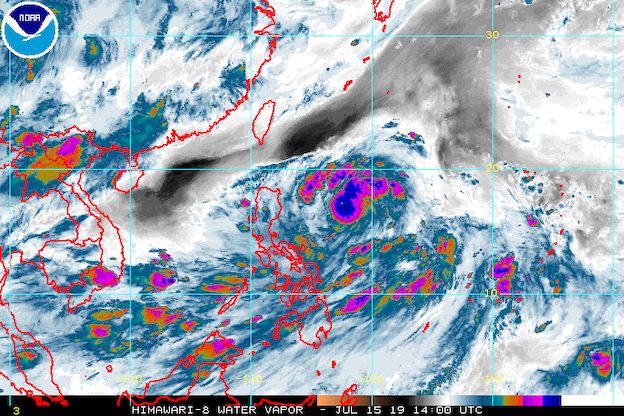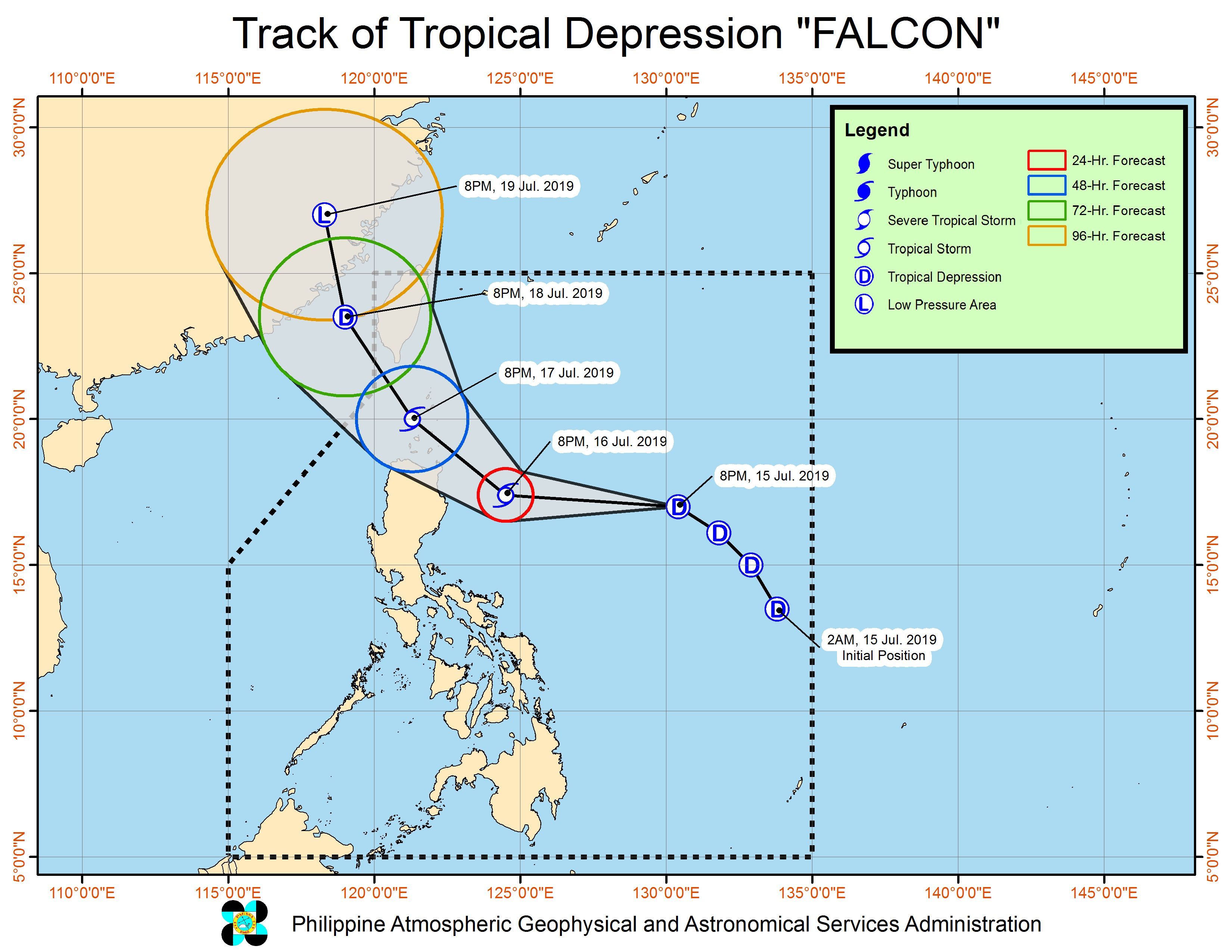SUMMARY
This is AI generated summarization, which may have errors. For context, always refer to the full article.

What’s the weather like in your area? Tweet us at @rapplerdotcom.
MANILA, Philippines – Three areas in Luzon were placed under Signal No. 1 late Monday night, July 15, due to Tropical Depression Falcon.
In a bulletin issued 11 pm on Monday, the Philippine Atmospheric, Geophysical, and Astronomical Services Administration (PAGASA) said Falcon is already 855 kilometers east of Casiguran, Aurora, or 890 kilometers east of Tuguegarao City, Cagayan.
The tropical depression accelerated further, now moving northwest at a slightly faster 30 kilometers per hour (km/h) from the previous 25 km/h.
Its maximum winds earlier increased from 45 km/h to 55 km/h on Monday afternoon, while its gustiness increased from 60 km/h to 65 km/h. (READ: FAST FACTS: Tropical cyclones, rainfall advisories)
Signal No. 1 is now raised over the following:
- Cagayan
- Batanes
- northern part of Isabela (1st and 6th Districts)
This means winds of 30 km/h to 60 km/h are expected in those 3 areas in 36 hours. Residents have lead time of 36 hours to prepare for the effects of the approaching tropical depression.
PAGASA warned that Falcon may intensify into a tropical storm before its possible landfall in Extreme Northern Luzon – the Batanes-Babuyan area – on Wednesday afternoon or evening, July 17.
The tropical depression is also enhancing the southwest monsoon or hanging habagat – another source of rain.
Here’s what to expect in terms of rainfall:
Tuesday, July 16
- Light to heavy monsoon rain
- Mimaropa
- Western Visayas
- Zamboanga Peninsula
- Bangsamoro Autonomous Region in Muslim Mindanao
Wednesday, July 17
- Moderate to heavy rain due to Falcon and the enhanced southwest monsoon combined
- Ilocos Region
- Cordillera Administrative Region
- Cagayan Valley
- Zambales
- Bataan
- Occidental Mindoro
- Oriental Mindoro
- Light to heavy monsoon rain
- Metro Manila
- Calabarzon
- rest of Central Luzon
- rest of Mimaropa
- Western Visayas
Thursday, July 18
- Moderate to heavy rain due to the enhanced southwest monsoon
- Ilocos Region
- Zambales
- Bataan
- Occidental Mindoro
- Oriental Mindoro
- Light to heavy monsoon rain
- Metro Manila
- Calabarzon
- rest of Central Luzon
- rest of Mimaropa
- Western Visayas
PAGASA reiterated that flash floods and landslides are possible in areas affected by Falcon and the enhanced southwest monsoon.
PAGASA also advised fishermen and those with small seacraft not to venture out into the seaboards of areas under Signal No. 1 and the eastern seaboards of the Visayas and Mindanao.
Falcon is expected to leave the Philippine Area of Responsibility on Thursday, July 18.

Falcon is the Philippines’ 6th tropical cyclone for 2019. The first 5 were all tropical depressions as well. (READ: LIST: PAGASA’s names for tropical cyclones in 2019)
The Philippines gets an average of 20 tropical cyclones annually, but since 2019 is an El Niño year, only 14 to 18 tropical cyclones are expected.
Below is the estimated number of tropical cyclones from July to December:
- July – 2 or 3
- August – 2 to 4
- September – 2 to 4
- October – 2 or 3
- November – 1 or 2
- December – 0 or 1
PAGASA declared the start of the rainy season last June 14. – Rappler.com
Add a comment
How does this make you feel?
There are no comments yet. Add your comment to start the conversation.